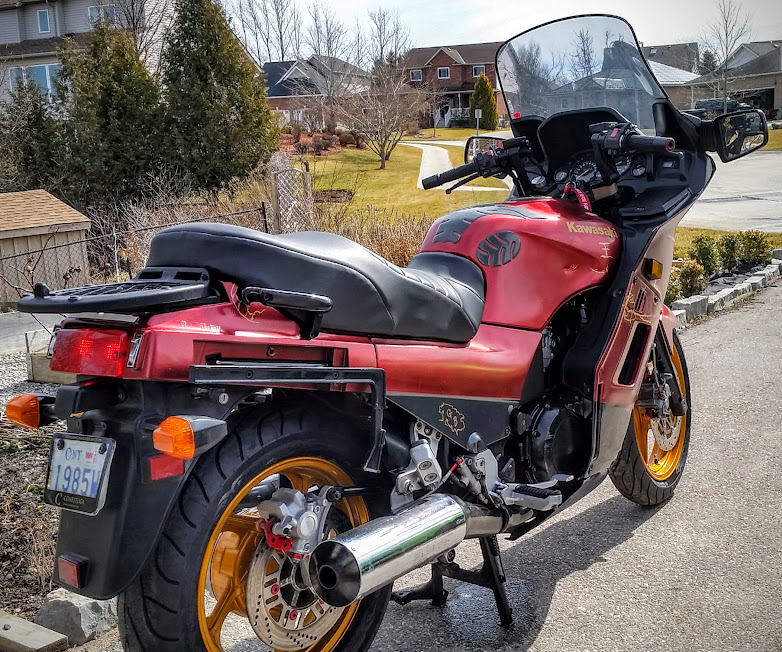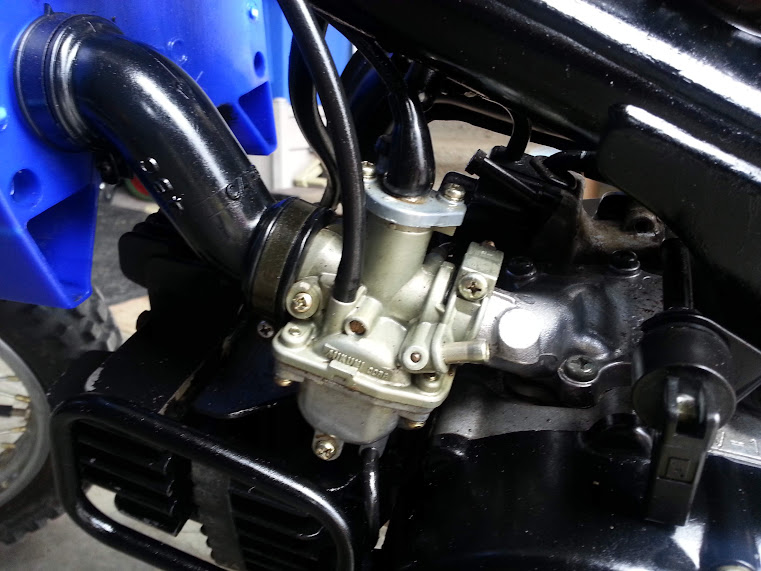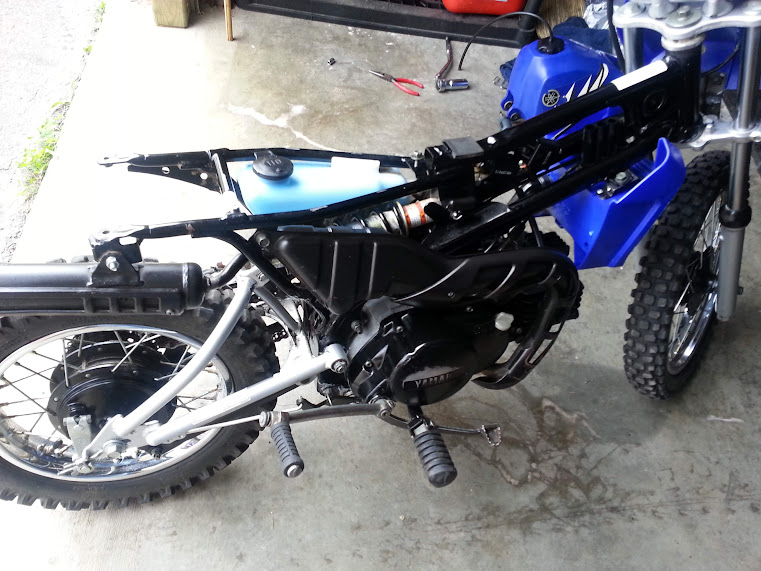 |
| The open road awaits, and it's still waiting... |
Recent frustrations with the twenty two year old Concours had me saying yesterday, "I like doing mechanical work, but sometimes I just want to go ride a fucking motorcycle." It was a day in the mid teens Celsius (almost 60 Fahrenheit), and the sound of motorcycle engines could be heard on distant roads. After spending the winter redoing the brakes, wheels and bearings, I got the Concours back on its feet only to find the carburetor has gone off. The bike is running lean, not fueling nicely and back-fires when coming off throttle. Instead of going out for a ride on one of the first nice days of the year, I was popping and swearing my way up and down the road by my house trying to get the carb to play nice.
 |
Some vacuum diagrams on there, but not where they go. Another
suggestion for lean burning/back firing conditions (which I have) are
the air cut valve (highlighted). |
Some research into Concours carbs produced a baffling array of opinion and vitriol. It appears that no one who works at a dealership has the experience or time to do carbs properly any more, and the carbs on the Concours are fantastically complicated.
I've done carbs before on cars, and labyrinthine vacuum tubes aren't a problem when you have a diagram to follow, but Clymers doesn't include one in their manual (unless it's for California bikes), and the Kawasaki diagrams show bits of vacuum diagram spread across the valve head blowup, the carb blow up, the fuel tank blowup, air box blow up and others. Needless to say, trying to chase vacuum connections across half a dozen diagrams isn't easy.
Today I'm taking the fairing I just put on back off, removing the gas tank (again) and trying to make sense of the vacuum tubes. If nothing obvious presents itself it'll be time to remove the carbs and go deeper. I just did something similar on the XS1100 in the fall. I haven't had time to work on it since because I'm spending all my garage time on the Concours.
I'm starting to think one project bike is enough. The other one needs to be modern, dependable and there when I need it so I can, sometimes, you know, just go ride a damned bike.
Sources for Concours carburetor and vacuum information:
As usual, CoG is the place to go first:
http://forum.cog-online.org/index.php?topic=27077.0
http://forum.cog-online.org/index.php?topic=38095.0
http://forum.cog-online.org/index.php/topic,11914.0.html
CoG wisdom on Concours carbs:
Normally it is caused by dirty carbs and and not being sync'd properly. The dirty part can be from just a few days of sitting due to the ethanol evaporating....
it's very likely during the "cleaning" they did not dissassemble the air-cut valves from the 2 carb bodies prior to spraying with volatile carb cleaner. internal to each of those housings is a very delicate diphragm, not unlike the ones that lift the slides....during this process they damaged them, and at the least, never cleaned the rod attached to those diphragms that during decell, when the diphragm moves, opens a port to add fuel to the intake tract to preclude/prevent a "lean burn popping" upon decell. That is the sole purpose of those 2 valves, when they don't function, you get this result.
Check the vacumn stuff like you already mentioned. I had a back fire for a while, peeked under the tank, found the rubber cap on the #3 carb was split. Just for the fun of it, replaced all the hoses while there, good to go now.
You Cannot do away with the reed valves entirely unless you tap the ports in the actual valve cover and thread in some set screws. The easier way here is to leave the reed valves and metal covers on the valve cover, and remove all the vacuum hosing associated with the pair valve. Go to your local auto parts store, and pick up three 5/8" "heater core block off caps". They look like big vacuum caps, and also some 3/16" regular vacuum caps. Using the 5/8" Cap off the 2 ports left on the valve cover, and insert one backwards into the airbox hole. Use the 3/16" to block the intake ports.



















